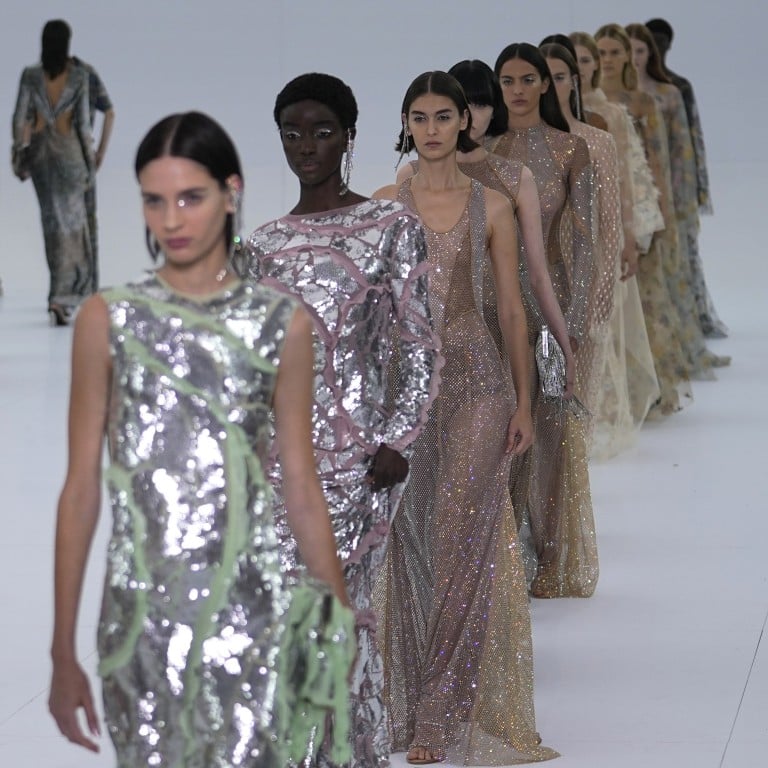Checking Out the Rich Heritage of Eastern Wear Pakistan in Modern Style
Revealing the Rich Heritage of Eastern Style
Exploring the detailed tapestry of Eastern fashion introduces a world where tradition satisfies innovation, and craftsmanship links with cultural meaning. From the opulent silks of ancient dynasties to the detailed embroidery of nomadic tribes, each garment informs a story that transcends time and boundaries, resembling the rich heritage and imaginative legacy of the East. As we peel off back the layers of background and tradition, an interesting trip waits for, deciphering the keys behind the captivating allure and long-lasting impact of Eastern style on the global stage.
Beginning of Eastern Style

In Mesopotamia, as an example, the Sumerians and Babylonians produced garments making use of leather, linen, and woollen, decorated with intricate patterns and jewelry. Old Egyptians are renowned for their advanced weaving skills and the usage of light-weight, breathable fabrics like linen. Chinese style stressed the relevance of color significance and detailed needlework techniques, while Indian clothes included vivid hues, extravagant fabrics like silk and cotton, and fancy drape designs such as the saree.
These old human beings not only influenced each other however likewise led the way for the culturally abundant and varied tapestry that is modern Eastern style. Via centuries of evolution, Eastern fashion remains to prosper, mixing practice with modern influences to create distinct and ageless styles.
Cultural Influences and Practices
Attracting from centuries-old personalizeds and ideas, social influences and traditions play a critical role in shaping the significance of Eastern style (eastern wear pakistan). The rich tapestry of cultures throughout Eastern regions such as Asia, the Middle East, and Africa has heavily affected the apparel designs, shades, materials, and develops that are common in Eastern fashion today
In countries like India, Japan, and China, typical garments like sarees, bathrobes, and cheongsams proceed to hold considerable social significance and are typically adorned with detailed embroidery or symbolic patterns that reflect ingrained beliefs and worths. Similarly, in Middle Eastern countries, the flowing kaftans and abayas used by males and females not only work as modest clothing however likewise reflect the area's cultural heritage and Islamic practices.
Furthermore, making use of details colors like red permanently luck in Chinese culture or complex geometric patterns inspired by Islamic design better exemplify exactly how social influences show up in Eastern fashion - eastern wear pakistan. By recognizing and preserving these social impacts and traditions, Eastern style remains to advance while remaining true to its rich heritage
Evolution of Eastern Apparel
In time, Eastern garments have undertaken significant improvements, mirroring a mix of tradition and modernity in their style and design. Typical Eastern garments such as the saree, kimono, hanbok, and salwar kameez have actually advanced to include contemporary elements while preserving their cultural essence.
One significant advancement is the use of innovative fabrics and methods in Eastern garment building. Standard handwoven fabrics like silk and cotton have actually been enhanced with modern-day products such as polyester and blends, offering boosted longevity and convenience of treatment. In addition, innovations in printing technologies have enabled intricate patterns and layouts to be incorporated into Eastern garments with precision and information.
In addition, adjustments in shape and tailoring have actually updated Eastern outfit, making them much more flexible and appropriate for varied occasions. Typical dress codes have actually unwinded, enabling for experimentation with colors, designs, and embellishments. This development has not only made Eastern garments extra accessible and appealing to a worldwide audience however has also guaranteed their continued relevance in modern fashion landscapes.
Significance in Eastern Attire
Discovering go to my blog the deep-rooted social relevance woven into Eastern clothes unveils an abundant tapestry of significance and practice. Eastern garments are usually imbued with signs that reflect the user's social condition, spiritual beliefs, and social identity. For instance, in numerous Eastern societies, the color red signifies luck and success, making it a popular option for wedding apparel. Similarly, elaborate needlework patterns can convey stories of mythology or represent true blessings for the wearer.
Moreover, particular garments hold symbolic definitions. Its style, fabric, and even the means it is put on all bring deep cultural significance.

Effect of Eastern Style Today

The consolidation of Eastern aspects in Western fashion has actually caused a blend of designs that provide to varied preferences and choices (eastern wear pakistan). Developers often draw inspiration from Eastern fabrics, patterns, and shapes, creating innovative and unique items that blend standard and modern-day aesthetics. This cross-cultural exchange has not just renewed the garment industry yet additionally cultivated a much deeper recognition for Eastern heritage and craftsmanship
Moreover, the surge of digital systems and social media has even more amplified the influence of Eastern style, enabling brands and designers to get to a larger audience and display their cultural heritage to the globe. With partnerships, fashion programs, and on the internet campaigns, Eastern style remains to flourish and evolve in today's vibrant and interconnected international landscape.
Final Thought
To conclude, the abundant heritage of Eastern fashion is a testimony to the cultural impacts, elaborate craftsmanship, and profound symbolism installed in each garment. From ancient people to modern analyses, Eastern fashion remains to astound with its special mix of custom and innovation. The impact of Eastern style these details today serves as a suggestion of the timeless sophistication and imaginative expression that have actually made it a global phenomenon commemorated for its rich cultural heritage.
Discovering the intricate tapestry of Eastern fashion introduces a world where custom fulfills development, and workmanship links with cultural meaning.The sustaining significance and cultural value embedded in Eastern clothing continue to shape and affect the modern impact of Eastern fashion today. Eastern fashion has actually gone beyond boundaries, becoming a worldwide sensation embraced by designers, stars, and style fanatics worldwide.In conclusion, the rich heritage of Eastern fashion is a testament to the cultural impacts, complex workmanship, and extensive symbolism embedded in each garment. The impact of Eastern style today serves as a suggestion of the classic style and artistic expression that have made it a global phenomenon celebrated for its rich cultural heritage.